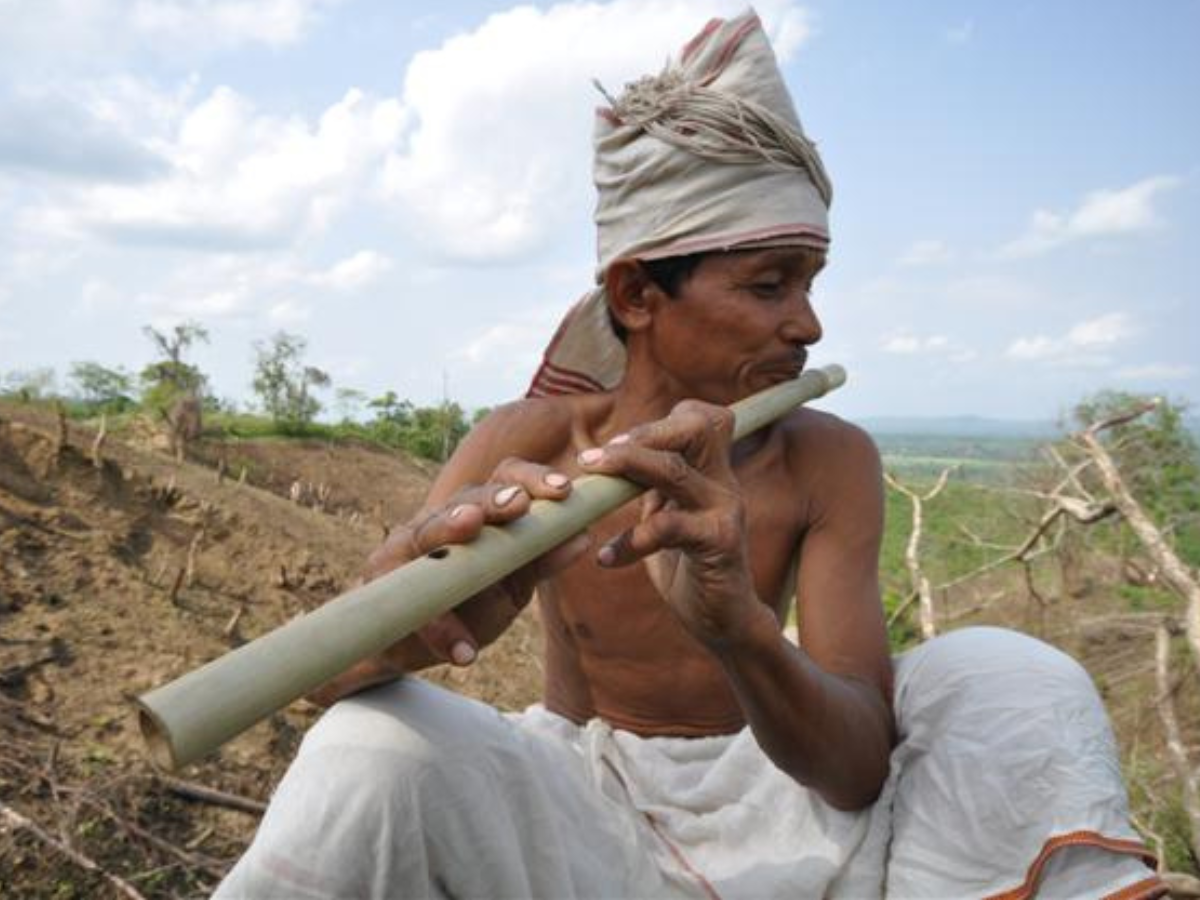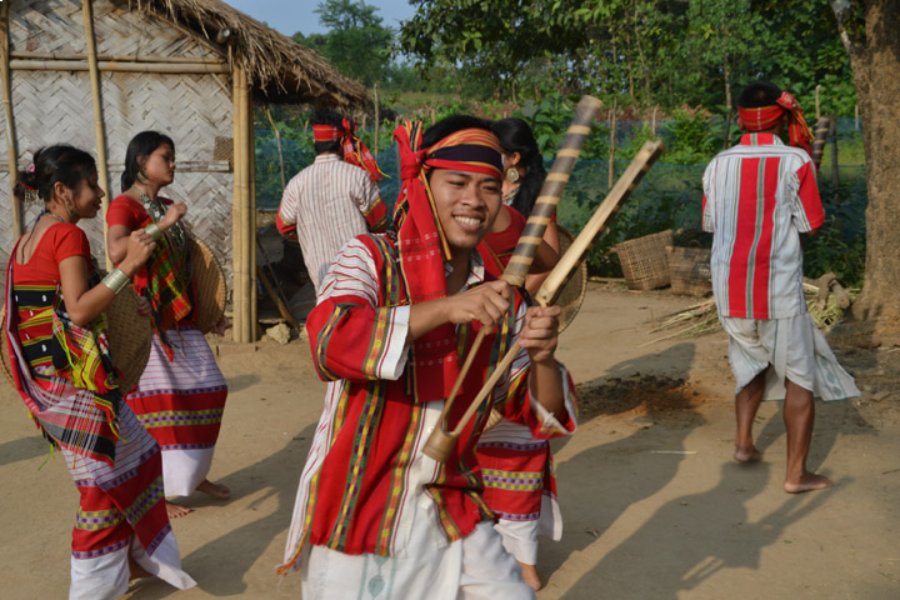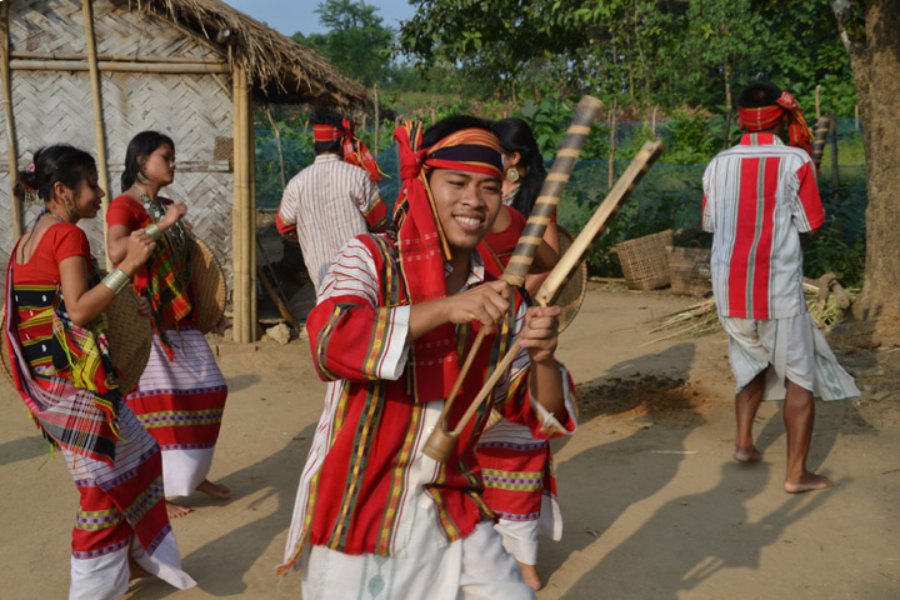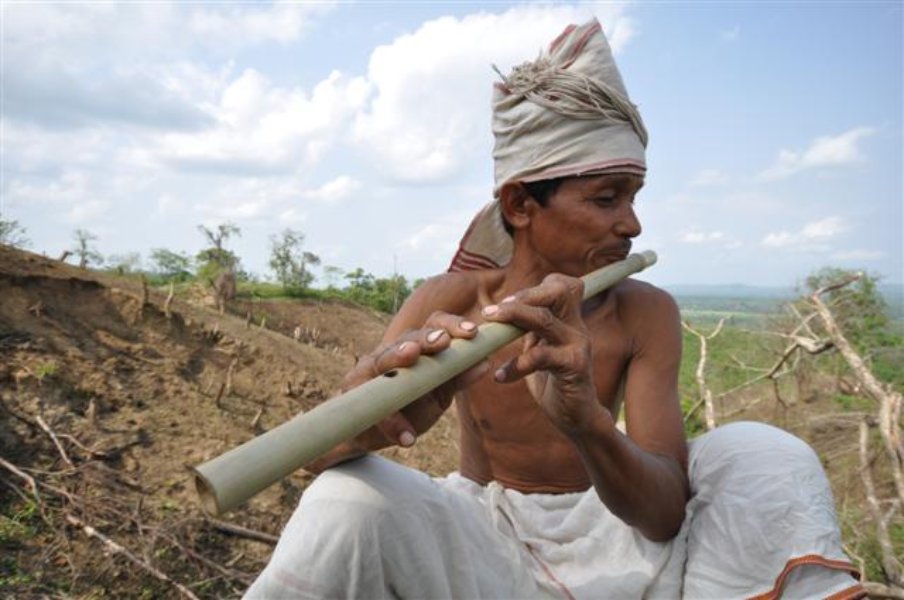State
Tribe Name
Art Type
short description
Jhum cultivation, an age-old practice of the Tripuri tribe, illustrates deep-rooted ties with nature and determines livelihoods thereby. This tribe has been clearing small pockets of forests over time to grow vegetables, cereals, and pulses, and this provides a clearest image of the harmony with nature. While they originally believed in nature worship, many have converted into Vaishnavas; yet they still visit their deities through bamboo structures and stones, believing them to be embodiments of their attachment to land.
Thumbnail

Filter Postion
Left
Filter Background
Off
Theme
Filter Header Image

content
Image

description
Jhum cultivation, an age-old practice of the Tripuri tribe, illustrates deep-rooted ties with nature and determines livelihoods thereby. This tribe has been clearing small pockets of forests over time to grow vegetables, cereals, and pulses, and this provides a clearest image of the harmony with nature. While they originally believed in nature worship, many have converted into Vaishnavas; yet they still visit their deities through bamboo structures and stones, believing them to be embodiments of their attachment to land.
Image Mode
landscape
Image

description
Music and dance are integrated into their daily existence, "celebrated with songs of love, marriage, and harvest." Kharchi Puja, Garia Puja, and Ker Puja are festivals that mark agrarian milestones in their lives for keeping traditions alive. In fact, for the Tripuri, bamboo is much more than a resource, it is a representation of their way of life. Their homes, tools, and even dance artefacts, such as winnowing fans and seed baskets, are crafted from it.
Image Mode
landscape
Image

description
The Mamita festival, associated with the goddess Mailuma, is an example that illustrates this profound connection, marked by the participation of dancers carrying bamboo materials during the performance. Even though modernization is slowly steering many young Tripuris away from farming, they usually return back to their roots during their festivals to involve themselves with the arts, music, and rituals. They would then be considered to have made a mark for future generations alive with the spirit of reminiscing for themselves as well as continuing an abidance with their ancestors.
Image Mode
landscape
promoted
Off
Verified
On
